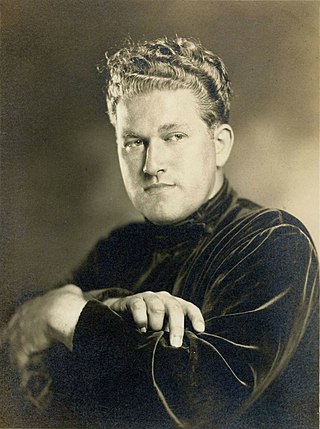
August William Derleth was an American writer and anthologist. He was the first book publisher of the writings of H. P. Lovecraft. He made contributions to the Cthulhu Mythos and the cosmic horror genre and helped found the publisher Arkham House. Derleth was also a leading American regional writer of his day, as well as prolific in several other genres, including historical fiction, poetry, detective fiction, science fiction, and biography. Notably, he created the fictional detective Solar Pons, a pastiche of Arthur Conan Doyle's Sherlock Holmes.

Howard Phillips Lovecraft was an American writer of weird, science, fantasy, and horror fiction. He is best known for his creation of the Cthulhu Mythos.
Arkham House was an American publishing house specializing in weird fiction. It was founded in Sauk City, Wisconsin, in 1939 by August Derleth and Donald Wandrei to publish hardcover collections of H. P. Lovecraft's best works, which had previously been published only in pulp magazines. The company's name is derived from Lovecraft's fictional New England city, Arkham, Massachusetts. Arkham House editions are noted for the quality of their printing and binding. The colophon for Arkham House was designed by Frank Utpatel.

Azathoth is a deity in the Cthulhu Mythos and Dream Cycle stories of writer H. P. Lovecraft and other authors. He is the supreme deity of the Cthulu Mythos and the ruler of the Outer Gods, and may also be seen as a symbol for primordial chaos, therefore being the most powerful entity in the entirety of the Cthulhu Mythos.

"The Colour Out of Space" is a science fiction/horror short story by American author H. P. Lovecraft, written in March 1927. In the tale, an unnamed narrator pieces together the story of an area known by the locals as the "blasted heath" in the hills west of the fictional town of Arkham, Massachusetts. The narrator discovers that many years ago a meteorite crashed there, poisoning every living being nearby: vegetation grows large but foul-tasting, animals are driven mad and deformed into grotesque shapes, and the people go insane or die one by one.

The Case of Charles Dexter Ward is a short horror novel by American writer H. P. Lovecraft, written in early 1927, but not published during the author's lifetime. Set in Lovecraft's hometown of Providence, Rhode Island, it was first published in the May and July issues of Weird Tales in 1941; the first complete publication was in Arkham House's Beyond the Wall of Sleep collection (1943). It is included in the Library of America volume of Lovecraft's work.
This is a complete list of works by H. P. Lovecraft. Dates for the fiction, collaborations and juvenilia are in the format: composition date / first publication date, taken from An H. P. Lovecraft Encyclopedia by S. T. Joshi and D. E. Schultz, Hippocampus Press, New York, 2001. For other sections, dates are the time of composition, not publication. Many of these works can be found on Wikisource.
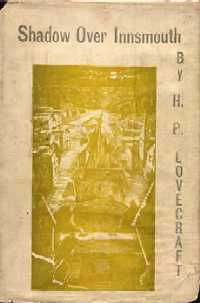
The Shadow over Innsmouth is a horror novella by American author H. P. Lovecraft, written in November–December 1931. It forms part of the Cthulhu Mythos, using its motif of a malign undersea civilization, and references several shared elements of the Mythos, including place-names, mythical creatures, and invocations. The Shadow over Innsmouth is the only Lovecraft story that was published in book form during his lifetime.
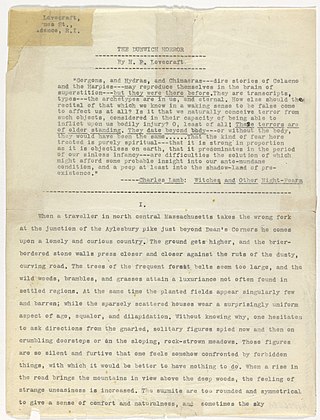
The Dunwich Horror is a horror novella by American writer H. P. Lovecraft. Written in 1928, it was first published in the April 1929 issue of Weird Tales (pp. 481–508). It takes place in Dunwich, a fictional town in Massachusetts. It is considered one of the core stories of the Cthulhu Mythos.
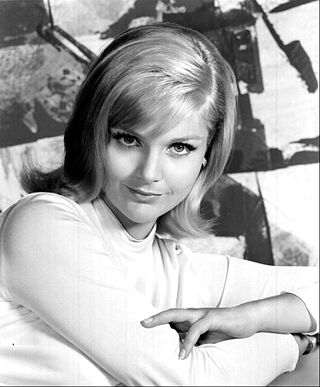
Carol Lynley was an American actress known for her roles in the films Blue Denim (1959) and The Poseidon Adventure (1972).

The Fallen Idol is a 1948 British mystery thriller film directed by Carol Reed, and starring Ralph Richardson, Bobby Henrey, Michèle Morgan, and Denis O'Dea. Its plot follows the young son of a diplomat in London, who comes to suspect that his family's butler, whom he idolises, has committed a murder. It is based on the 1936 short story "The Basement Room", by Graham Greene.

Lovecraft Country is a term coined for the New England setting used by H. P. Lovecraft in many of his weird fiction stories, which combines real and fictitious locations. This setting has been elaborated on by other writers working in the Cthulhu Mythos. The phrase was not in use during Lovecraft's own lifetime; it was coined by Keith Herber for the Lovecraftian role-playing game Call of Cthulhu.

Lovecraftian horror, also called cosmic horror or eldritch horror, is a subgenre of horror fiction and weird fiction that emphasizes the horror of the unknowable and incomprehensible more than gore or other elements of shock. It is named after American author H. P. Lovecraft (1890–1937). His work emphasizes themes of cosmic dread, forbidden and dangerous knowledge, madness, non-human influences on humanity, religion and superstition, fate and inevitability, and the risks associated with scientific discoveries, which are now associated with Lovecraftian horror as a subgenre. The cosmic themes of Lovecraftian horror can also be found in other media, notably horror films, horror games, and comics.
Ann Forrest Bell is a British actress, best known for playing war internee Marion Jefferson in the BBC Second World War drama series Tenko.
A Cthulhu Mythos anthology is a type of short story collection that contains stories written in, or related to, the Cthulhu Mythos genre of horror fiction launched by H. P. Lovecraft. Such anthologies have helped to define and popularize the genre.

7 Women, also known as Seven Women, is a 1966 Metro-Goldwyn-Mayer Panavision drama film directed by John Ford and starring Anne Bancroft, Sue Lyon, Margaret Leighton, Flora Robson, Mildred Dunnock, Betty Field, Anna Lee, Eddie Albert, Mike Mazurki and Woody Strode. It was produced by Ford and Bernard Smith from a screenplay by Janet Green and John McCormick, based on the short story "Chinese Finale" by Norah Lofts. The musical score was conducted by Elmer Bernstein and the cinematography was handled by Joseph LaShelle. This was the last feature film directed by Ford, ending a career that had spanned 53 years.

Someone in the Dark is a collection of fantasy and horror short stories by author August Derleth. It was released in 1941 and was the second book published by Arkham House. 1,115 copies were printed, priced at $2.00. In Thirty Years of Arkham House, Derleth implied that this title had sold out by the end of 1944.

Pretty Polly is a 1967 British comedy film directed by Guy Green and based on the short story Pretty Polly Barlow by Noël Coward. It stars Hayley Mills, Shashi Kapoor, Trevor Howard and Brenda De Banzie. The film is largely set in Singapore.
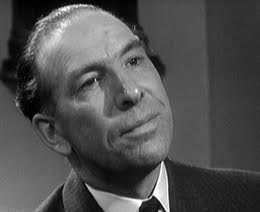
William Devlin was a Scottish actor who appeared widely in films and television in a screen career that lasted from 1937 until 1967. The son of an architect, he was born in Aberdeen in 1911. An older brother was Lord Devlin.
This is a list of the writings of the American writer August Derleth.















